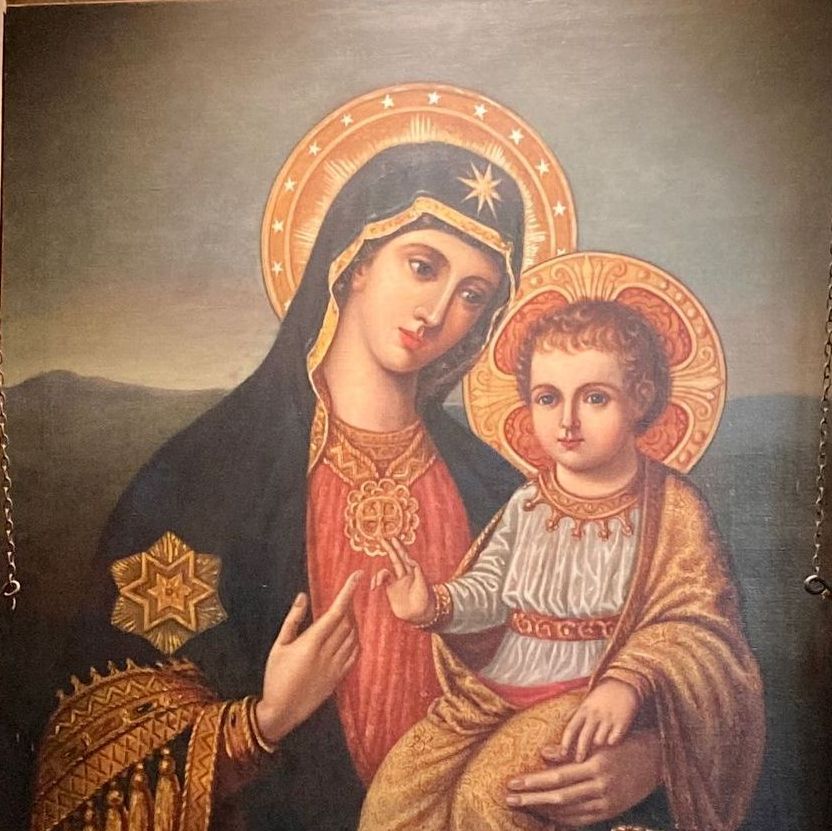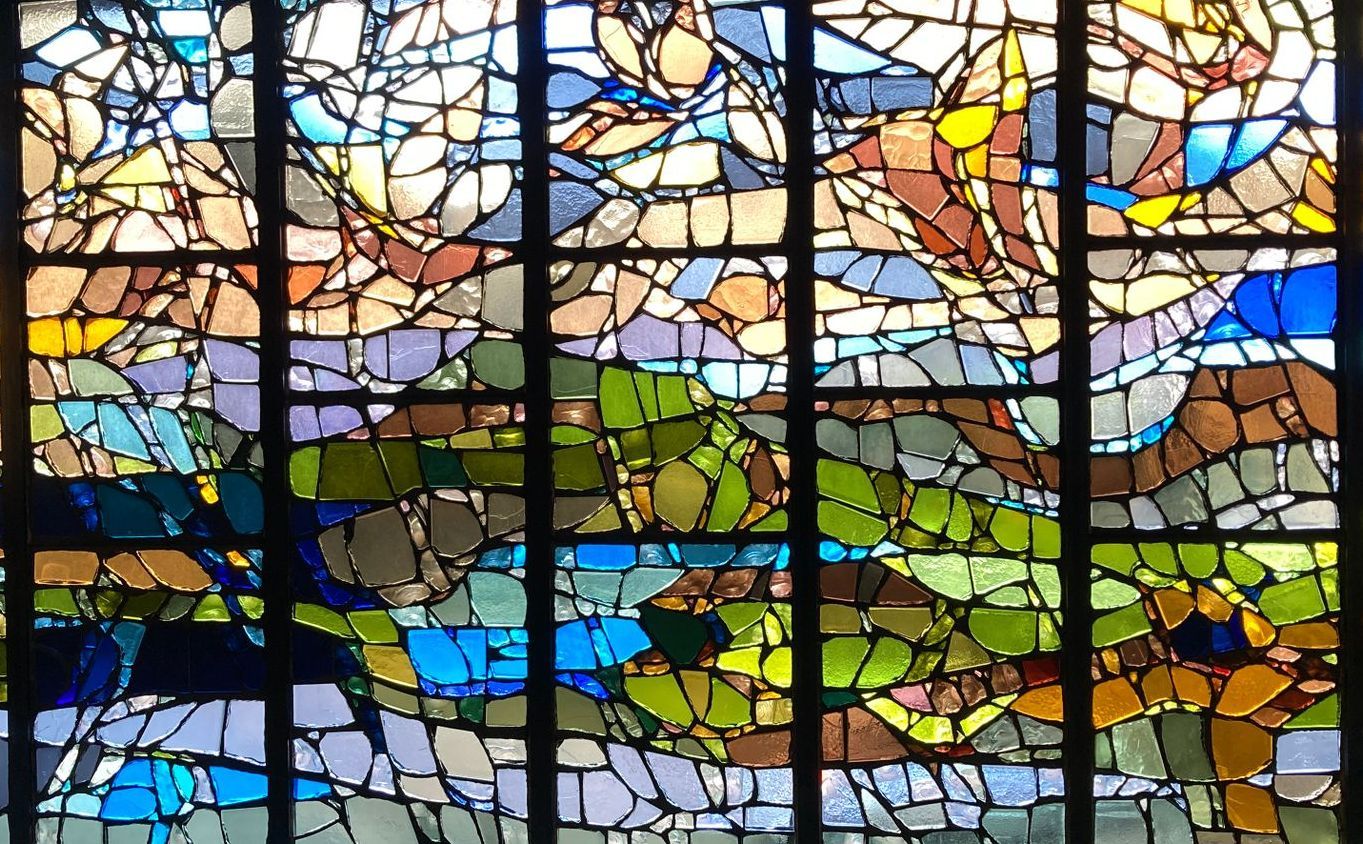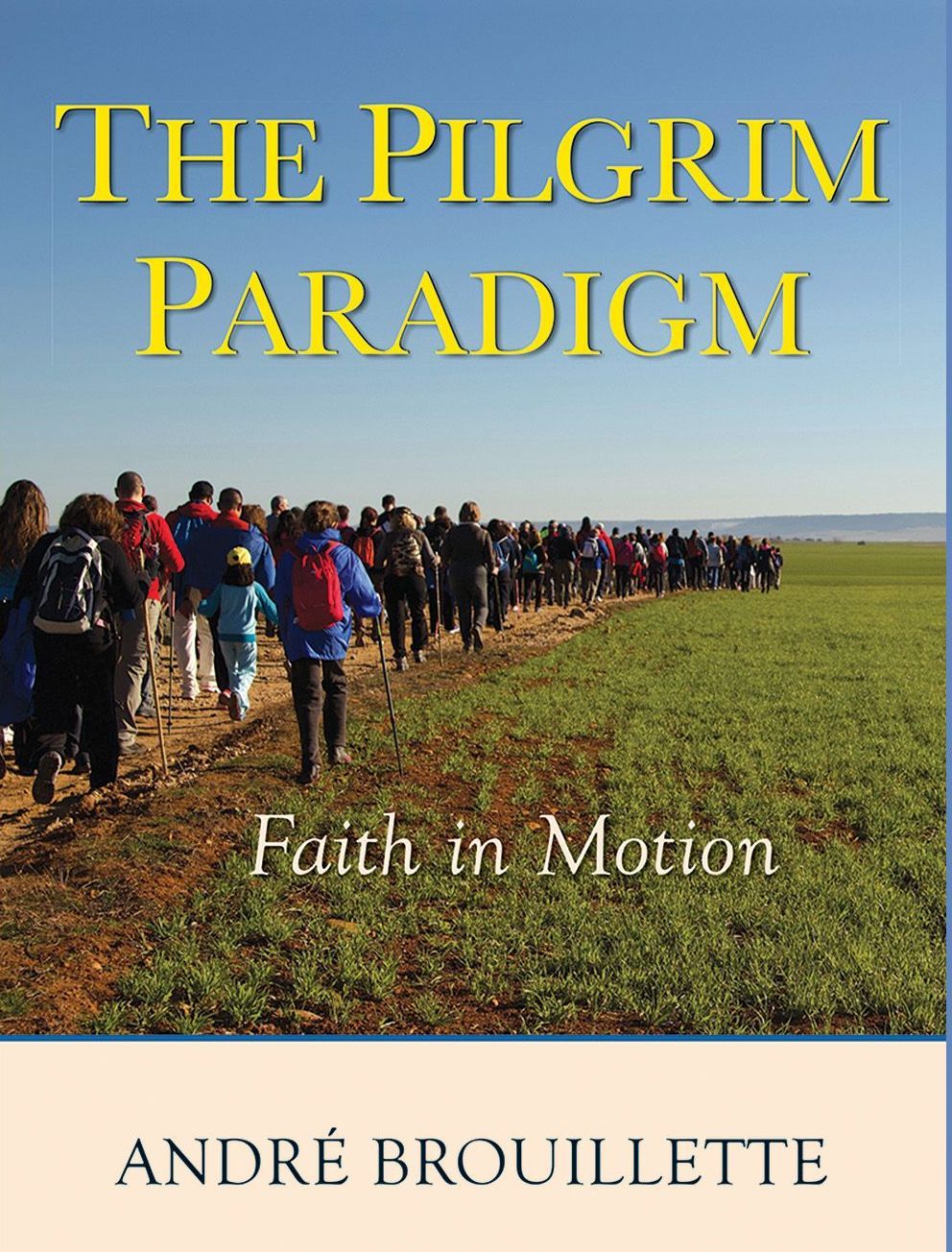THEOLOGY AND PILGRIMAGE
In this article André Brouillette, SJ,
Associate Professor of Systematic and Spiritual Theology at
Boston College School of Theology and Ministry,
reflects on how pilgrimage is understood theologically.

Pilgrimage is not a required religious practice in Christianity, but a long-standing tradition. From the early years of the faith, devout Christians have prayed at the tombs of the apostles Peter and Paul in Rome. They later visited the Holy Land. Medieval Christians could reach local shrines in procession, or go to far-flung sites across Europe. Up to our days, Christians journey to the ancient cities of Jerusalem and Rome, but also to Lourdes, Fatima, Assisi, Medjugorje, Mexico City, or Walsingham.
Pilgrimage echoes and embodies the experience of the journey of faith. There is movement, vulnerability, challenges, companionship, prayer, divine presence, and a destination. Throughout the centuries, pilgrims have experienced the suspended, liminal, divine time of kairos on the journey, at a distance from the regular chronos of everyday life.
Pilgrims bring their whole being to the experience. Pilgrimage is a total devotion involving the body and senses – sight, and touch in particular. It is also a popular devotion; pilgrims make the pilgrimage. They flock to the site of an apparition. They want to touch the relics of the saint or the holy site. Most often, the hierarchy of the Church simply recognizes what the People of God are already doing. The pilgrims embrace the shrine and the journey, long or short, leading to it.
Throughout history, it led to some excesses – decried by Church authorities – and to suspicion by theological elites about the popular nature of the phenomenon. For these reasons, criticisms are as old as pilgrimages. Why spend so much time and energy on a journey? Why abandon one’s obligations and loved ones for a time? Is not charity, prayer or holiness achievable closer to home? Is pilgrimage a religiously-veiled wanderlust? Or an opportunity for mischief? The Protestant Reformation was especially critical of pilgrimages, leading to a lasting reticence, despite contemporary phenomena like “study tours” in the Holy Land.

For Christians, the touchstone of a theology of pilgrimage is the Incarnation, the belief that the Word of God took flesh, and dwelt on earth. The embodied divine presence sanctified creation. By his life, death, and resurrection, Christ made the holiness of God visible, touchable, embodied. Places associated with him gained a particular significance.
The Hebrews already had a heightened sense of a localized divine presence. With the ark of the covenant, with the tent of the meeting following God’s people in the desert, a God on the move, in the midst of his people, was depicted as inhabiting a pilgrim space. With the erection of the Jerusalem Temple, a final dwelling place of God’s holiness was reached. The Promised Land as such also landed the status of a Holy Land as a whole.
The Exodus story is central to understand the Biblical roots of pilgrimage. The journey from slavery in Egypt toward the Promised Land was a long and eventful one. A years-long march in the desert. The gift of the Covenant. The creation, really, of a people, God’s people through the Law and the shared experience of liberation. A divine presence in their midst, accompanying them along the way. The story highlights the connection between pilgrimage and migration, and the ethical component that the Exodus story conveys. The care for foreigners, and the hospitality that they deserve, is grounded in the Hebrews’ experience of having been aliens themselves, before making their way to a place they could their own.
The connection between Jesus himself and pilgrimage is noteworthy. The gospels depict him journeying to Jerusalem to attend important religious festivals, first with his family, later with his disciples. He spent time at the Jerusalem Temple. His last supper was the pilgrim meal commemorating the Exodus, shared with his fellow travelers. His passion and death in the city of Jerusalem at the time of Passover sealed the connection between Jesus and pilgrimage.
The members of early Christian communities were calling one another ‘saint,’ showing how God’s holiness was not simply contained in Godself in heaven, but was also present in the believers who followed into Christ’s footsteps. Holiness can be embodied. Hence, in addition to the sites associated with Christ (e.g., Holy Sepulcher, Garden of Gethsemane, Jordan river), many places associated with saints became pilgrimage sites, starting with their tombs. Relics became a major draw to the various sites. As objects, the epitomized the presence and power of the divine, and connect the pilgrims with their great predecessors in the faith, inspiring them in their own journeys.

Lived as a journey, the experience of pilgrimage lends itself to a narrative treatment. There are countless reports about individual pilgrim journeys, from travel guides to intimate journals. While pilgrimage is primordially a practice, it has also been adopted in different ways as a metaphor to understand Christian life. John Bunyan’s Pilgrim’s Progress uses pilgrimage as the leading metaphor to explore the ways and obstacles of right Christian living. It crystalizes the importance of this image in Protestant spirituality.
On the Catholic side, one prominent example is that of the life story (sometimes known as Autobiography or Testament) of St. Ignatius of Loyola, the 16th-century founder of the Society of Jesus (Jesuits). In conversations with a trusted companion, he shared a narrative about his life that focuses on his pilgrim journey, and in which he is called simply “the pilgrim.” A major part of the narrative is devoted to the pilgrimage to Jerusalem of the young convert Ignatius in the footsteps of Jesus. Later, the journey took a more discerning turn as a question related to his identity as a companion of Jesus, and would lead him to university studies in Spain and France, before reaching Rome and founding the Society of Jesus with his companions. The pilgrim “drive” morphed from an exterior motion to an inner quest.
The Book of Margery Kempe is also a significant pilgrim narrative. A 15th century mother and mystic, Kempe depicts her travels to and from the Holy Land and other important sites with an eye for details. A forceful woman and avid traveler experiencing mystical experiences, her narrative makes for an intense reading. The text was rediscovered only in the 20th century, after centuries of obscurity. (For more about Margery Kempe and her Book see this blog post by Anne E Bailey.)
On the orthodox side, the 19th century Pilgrim’s Tale (or the Way of the Pilgrim) depicts the journey of a quest for ceaseless prayer, bringing the narrator on the road after having experienced loss, and despite physical limitations. Through multiple encounters along the way, the Russian pilgrim shares the life stories of a wide cast of individuals, and learns about the hesychast style of prayer. While he reaches holy sites, pilgrimage also becomes a prayerful way of life.

While the Roman Catholic Church has embraced and encouraged pilgrimage for a long time as a pious devotional practice, the second half of the 20th century has witnessed a tremendous growth in the Church’s use of pilgrim vocabulary.
The most important contribution is the use of the image of a “pilgrim Church” (Ecclesia peregrinans) in the constitution on the Church Lumen Gentium at the Second Vatican Council (1962-1965). The traditional distinction between the Church on earth and the Church in heaven was signified by the adjectives “militant,” and “triumphant.” The militant Church was the battling Church on earth, struggling in the midst of toil and persecution, whereas the triumphant Church referred to the Church already crowned in heaven. The Second Vatican Council chose to express this tension between earth and heaven, between what is, and what we hope for, through the vocabulary of the pilgrim Church and the Church in heaven. The pilgrim Church is the community of all believers who journey in the world, in its beauty and frailty, in its joys and sorrows, in its solidarity and its persecutions. This is the Church on the move, marching towards a heavenly Jerusalem. Chapter 7 of Lumen Gentium maps this journey of the Church between earth and heaven in a pilgrimage. This choice of the Council elevated the metaphor of pilgrimage to one of the most significant way to talk about the reality of the Church in this world. After the council, the pilgrim vocabulary made its way into some Eucharistic prayers, spreading among the worshipers the pilgrim image. (For more about the Pilgrim Church see this article by Professor Gavin D'Costa)
Another important development of the Church’s discourse around pilgrimage happened in preparation for the Great Jubilee of 2000. Pope John Paul II had decreed that the year marking the 2000th anniversary of the birth of Jesus Christ would usher a jubilee for the Church. A journey was set to prepare her for the occasion. A major document from the Pontifical Council for the Pastoral Care of Migrants and Itinerant People: “The Pilgrimage in the Great Jubilee” (April 25, 1998) presented the importance of pilgrimage in the Christian tradition, rooted in Jewish Scripture and experience, and leading to contemporary phenomena akin to pilgrimages of old – up to the “universal pilgrimages” of migration. A leading image of the document is the “tent of the meeting”, inspired by the Hebrews’ own tent hosting the Lord in the desert onto the Promised Land. The tent suggests mobility, fragility, whereas the meeting is that of God, but also of one another – as happens during pilgrimages! Published a year later by the same council, “The Shrine: Memory, Presence and Prophecy of the Living God” (May 8, 1999) emphasizes the role of the shrine as destination of pilgrimage, and place of encounter with the Lord.
Finally, prior to his journey to the Holy Land, Pope John Paul II released a “Letter concerning pilgrimage to the places linked to the history of Salvation” (June 29, 1999), in which he talks about his desire to visit the places that are so foundational to the Christian faith, calling for new awareness of our desire for the kingdom of God, and new life. The March, 2000 pilgrimage of the frail pope to Jerusalem was poignant for its penitential and devotional overtones. Penitential because it happened during Lent, and the pope left of message at the Western Wall asking for forgiveness for the treatment of the people of the Covenant. Devotional, because the main aim of the pilgrimage was to visit the places where Christ lived, died, and rose from the dead.
Finally, the dynamics of synodality emphasized by pope Francis borrows from the pilgrimage imagery. Etymologically, synodality, from the Greek syn+odos, refers to a journeying together, a pilgrimage indeed for all members of the Church.

Brouillette, André, The Pilgrim Paradigm: Faith in Motion, Mahwah, NJ: Paulist Press, 2021.
Brouillette, André, and Jeffrey Bloechl, eds. Pilgrimage as Spiritual Practice : A Handbook for Teachers, Guides, and Wayfarers, Minneapolis: Fortress, 2022.)
Bartholomew, Craig and Fred Hughes, eds. Explorations in a Christian Theology of Pilgrimage. Hants: Ashgate, 2004.
Ignatius of Loyola, “Autobiography,” in Spiritual Exercises and Selected Works, Edited by George E. Ganss, New York: Paulist Press, 1991, p. 65-111.
Pentkovsky, Aleksei, ed. The Pilgrim's Tale. New York: Paulist Press, 1999.
Pontifical Council for the Pastoral Care of Migrants and Itinerant People, “The Pilgrimage in the Great Jubilee” (April 25, 1998)
Pontifical Council for the Pastoral Care of Migrants and Itinerant People, “The Shrine: Memory, Presence and Prophecy of the Living God” (May 8, 1999)
Pope John Paul II, “Letter concerning pilgrimage to the places linked to the history of Salvation” (June 29, 1999)


